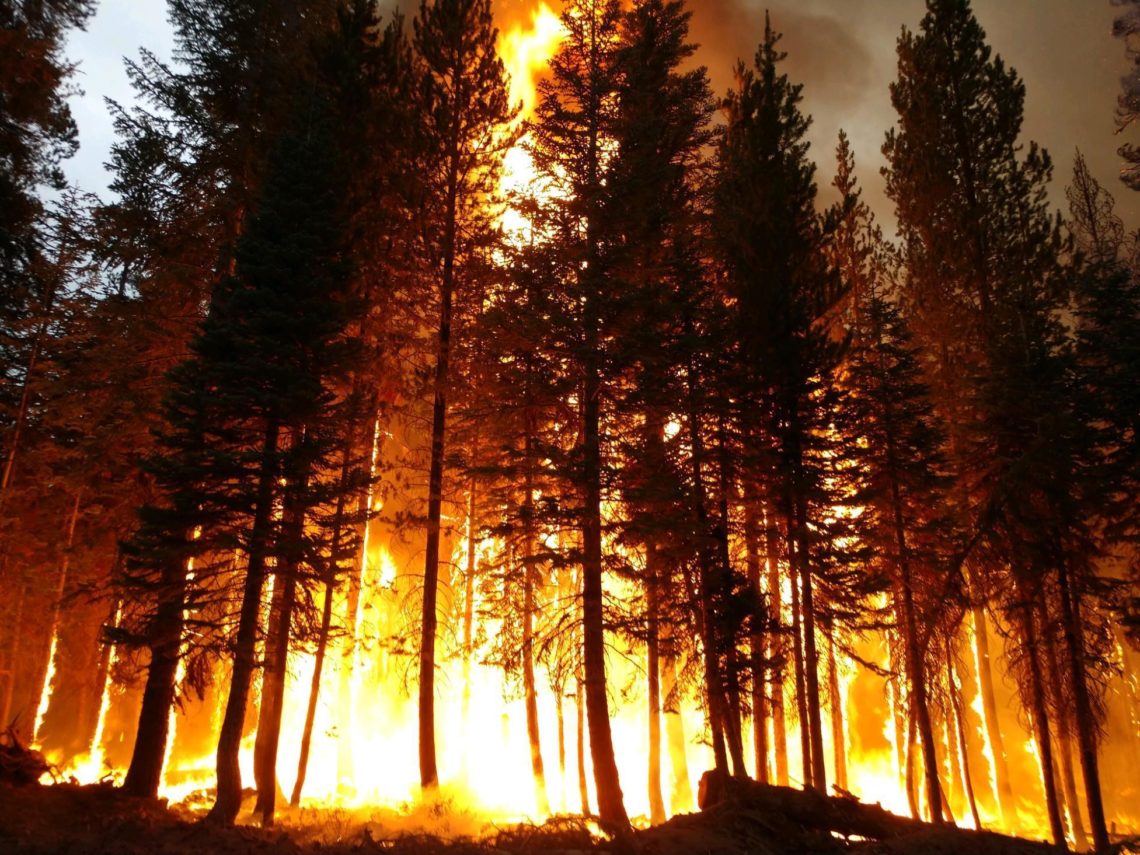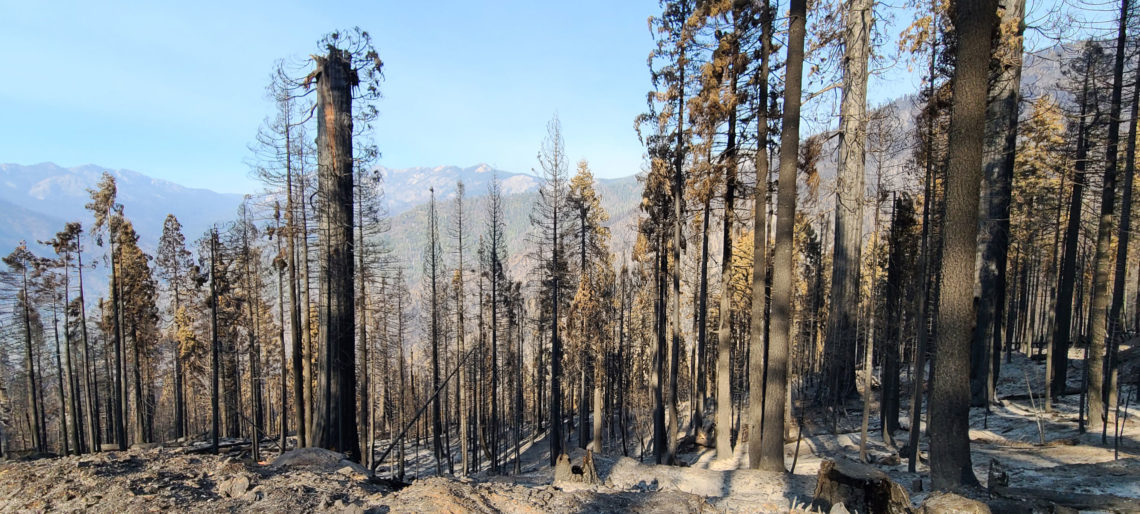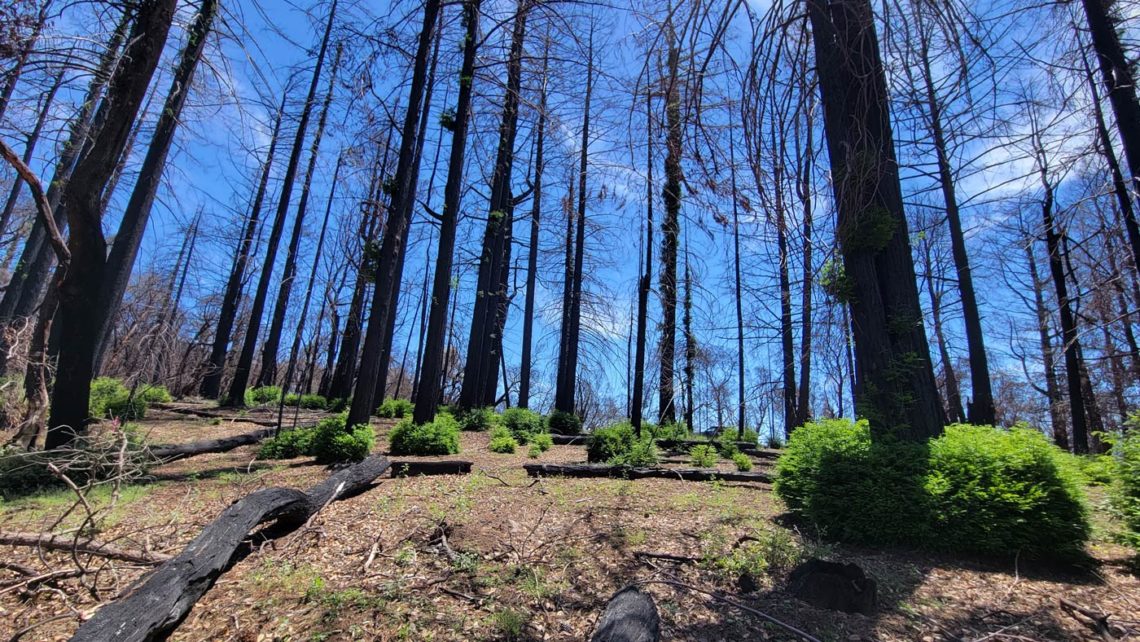High-severity wildfire affects coast redwood and giant sequoia forests differently
Record-breaking wildfire seasons in recent years have shocked Californians not just with the startling number of acres burned, but with the severity of the fires themselves. While coast redwood forests are capable of regenerating after events such as 2020’s CZU Lightning Complex fires, the destruction of park infrastructure has closed the much-visited Big Basin Redwoods State Park indefinitely. Severe wildfires in the Sierra Nevada have resulted in the destruction of large numbers of giant sequoias.
California has always been fire prone. Conservative estimates are that 4.5 million acres burned annually prior to Euro-American settlement. These fires were started either by lightning or by Indigenous peoples who used fire as a tool to promote growth of plants for food and basketry and to clear underbrush for hunting. How severely a fire burns is the result of three main factors: fuel loads, topography and weather. Euro-American settlement has dramatically altered the climate, as well as fuel loads in many of our forests.
Why have fires changed?
While there has been extensive debate about whether climate or forest management is to blame for high-severity fires, the answer is resoundingly “both.”
Climate change has been increasing temperatures, which lengthens the fire season by increasing the period that vegetation and dead wood are dry enough to burn. This is particularly problematic in California where the usual fall winds (like the Diablo winds in Northern California) are now coinciding with warmer and drier conditions. Climate change is also increasing the frequency and duration of heat waves and drought.

Past forest management also drives how severely fires burn because it impacts the amount and arrangement of fuels—the live vegetation and dead, woody debris that can easily spread wildfire. One of the biggest impacts has been fire exclusion, which began with the arrival of Euro-Americans in the late 19th century. New settlers killed and forcibly removed Indigenous peoples from their ancestral territories, ending their centuries-old practices of intentional burning to manage the landscape. Colonizers also began suppressing all lightning-ignited fires out of fear and to protect timber profits.
Without regular fires on the landscape, fuels have dramatically increased. The legacy of logging also plays a role in many forests, as cut-over stands tend to regenerate as dense, even-aged forests. Fire in the redwoods is really a tale of two forests: giant sequoia in its hot, dry, and lightning-prone Sierra Nevada habitat, and coast redwood in its cooler, wetter coastal habitat with infrequent lightning.
Giant sequoias and fire
Giant sequoias have a long history of regular wildfire that shaped healthy grove ecosystems. These frequent fires are due in part to frequent lightning ignitions in the hot, dry, fogless summers of the Sierra Nevada, as well as Indigenous burning. Fire scars in trees show that fires in the range occurred roughly every 3-15 years for the last several millennia. Because fires were so frequent, they were not generally very severe since there was not enough time for significant fuel to build up.
As a species, giant sequoia are well-adapted to wildfire. Their bark can be up to four feet thick, insulating their living tissue from the heat of the fire. Their exceptional height and elevated crowns also help them escape the flames of a surface fire. Even their cones are cued to open after a wildfire, ensuring a massive seed release is aligned with the ideal conditions created by the fire—bare mineral soil and canopy gaps that increase sunlight on the forest floor. Small patches of localized, high-intensity fire are needed to provide those ideal conditions, but widespread high-severity fire was not common in the past.

Credit: Save the Redwoods League
Fire exclusion has resulted in a dramatic change to the structure of the forest. Excessive amounts of woody debris have accumulated, as have smaller trees such as incense cedar and white fir, creating fuel conditions that are dramatically higher than historic norms. Now, when a wildfire burns into a giant sequoia grove, the fire might burn too hot and kill the ancient giants. Although these hot fires can result in prolific seedling regeneration, the millennia-old trees that were lost are irreplaceable.
This species cannot sprout back to life when its crown is killed by fire, so when the trees are gone, they’re gone.
Coast redwoods and fire
Coast redwood fire history is a little more complicated than that of giant sequoia. Coastal areas get less than 25 percent of the number of lightning strikes as the Sierra Nevada, and foggy, humid conditions mean that few of these will spread into large wildfires. Historically, most fires in the coast redwood range were set by Indigenous peoples managing the landscape.
Coast redwoods have adapted tolerance to both low- and high-severity fire. They have thick bark that can insulate their living tissue from any fire type and, remarkably, have the capacity to sprout from their trunks even after total crown loss. Fires can also stimulate sprouting from the trees’ bases, creating “fairy rings.” And because their seeds need bare mineral soil to germinate and survive, fire enables new redwoods to regenerate from seeds.

In the old growth, the exclusion of Indigenous burning practices has allowed for an increase in dead woody debris and brush on the forest floor. This increase is not as great as in the Sierra because the more humid climate breaks down some of that material, but it is still elevated compared to mid-19th century levels. The tree densities in old-growth forests haven’t changed much, however, because there have not been significant increases in the densities of trees that pose a significant fire risk. This means that when a modern wildfire burns in old-growth coast redwood forests, the excess fuel can lead to a more severe fire than the forests would have experienced if regular Indigenous burning had occurred, but the trees’ evolutionary adaptation to severe fire—trunk sprouting—means they can survive. Their crowns will take a long time to recover, but most will make it.
Despite this overall good news for old-growth coast redwoods, we do need to think about what kind of fire we want in these stands, and how we think about fires in the context of past logging and habitat fragmentation. When the trees burn severely, it will take years for their crowns to redevelop. Since there is only 5 percent of the old growth remaining in the coast redwood range, it would be far better to care for these lands appropriately and introduce more “good fire” so that they don’t get knocked back quite as hard when a wildfire comes through.
In second growth, the stand conditions have been dramatically altered. After logging, an individual coast redwood stump will often sprout numerous trees in “fairy rings,” which are joined by a cohort of other species such as Douglas-fir and tanoak, creating very dense stands that can elevate the risk of severe fire. Studies have shown that the redwoods in even these stands are largely resilient to wildfire, though very young stands may not have bark thick enough to protect the buds underneath so that the main trunks can sprout. Sprouts will likely still come up from their bases, but if the main trunks die, it would set back stand recovery.